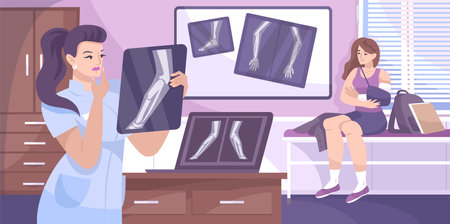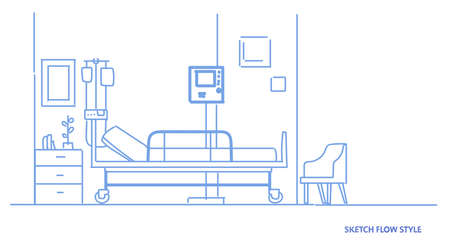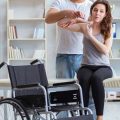Overview of Orthopedic Rehabilitation After Tendon and Ligament Surgeries
Understanding the Basics of Rehabilitation
Orthopedic rehabilitation is an essential part of recovery after tendon and ligament surgeries. In the United States, patients who undergo procedures like ACL repairs, rotator cuff repairs, or tendon transfers follow structured rehab protocols designed to restore movement, strength, and function. These protocols are based on evidence and best practices to help people get back to their daily activities safely.
Common Surgeries and Their Rehab Processes
| Surgery Type | Typical Rehab Timeline | Main Goals | Standard Protocol Elements |
|---|---|---|---|
| ACL Repair (Knee) | 6-12 months | Regain knee stability, prevent re-injury | Pain control, swelling reduction, range of motion exercises, gradual strengthening, sport-specific training |
| Rotator Cuff Repair (Shoulder) | 4-9 months | Restore shoulder function, improve strength | Sling use early on, passive then active motion exercises, progressive resistance training |
| Tendon Transfers (Various sites) | 3-6 months (varies) | Improve movement in affected limb or joint | Immobilization phase, controlled movement introduction, functional training for daily tasks |
The Stages of Rehabilitation in the US
1. Early Phase (Protection and Healing)
This phase focuses on protecting the surgical repair and minimizing pain or swelling. Patients may need crutches, braces, or slings depending on the surgery type.
2. Middle Phase (Restoring Movement and Strength)
Physical therapists guide patients through gentle stretches and light strengthening exercises. The goal is to regain joint mobility while avoiding stress on healing tissues.
3. Advanced Phase (Functional Training)
This stage helps patients return to normal activities like walking, lifting objects, or playing sports. Exercises become more challenging and tailored to individual goals.
The Role of Physical Therapy and Home Exercise Programs
In the US, physical therapy is a key part of orthopedic rehab. Therapists create personalized plans that may include clinic visits and home exercises. Insurance coverage can affect how often a patient sees a therapist or accesses specialized equipment.
2. The Role of Health Insurance in Rehabilitation Access
In the United States, your access to orthopedic rehabilitation after tendon or ligament surgery often depends on the type of health insurance you have. Let’s break down how private insurance, Medicare, and Medicaid each play a role in who gets physical therapy and how much it might cost.
How Different Types of Insurance Impact Rehab Access
After surgery, most people need physical therapy to regain movement and strength. But the path to recovery can look very different depending on your insurance:
| Insurance Type | Access to Rehab Services | Co-pays & Deductibles | Network Limitations |
|---|---|---|---|
| Private Insurance (Employer or Marketplace Plans) | Usually covers rehab but may limit number of sessions | Often higher co-pays and deductibles; varies by plan | Must use in-network therapists; out-of-network means higher costs or no coverage |
| Medicare (For Adults 65+ or with Disabilities) | Covers medically necessary rehab; annual caps may apply | Standard deductible plus 20% coinsurance for services after deductible is met | Must use providers that accept Medicare; fewer restrictions than private insurance networks |
| Medicaid (For Low-Income Individuals) | Covers rehab but benefits differ by state; some states have limits on visits per year | Usually minimal or no co-pays; low out-of-pocket costs for most services | Limited provider networks; fewer therapists accept Medicaid patients |
Co-Pays, Deductibles, and Out-of-Pocket Costs
Your out-of-pocket expenses can quickly add up during rehab. With private insurance, you may face a high deductible before coverage kicks in and have to pay co-pays for every session. Medicare has set rates but still leaves you responsible for part of the bill. Medicaid usually keeps costs very low, but finding a therapist who takes Medicaid can be a challenge.
Network Restrictions: Why They Matter
If your insurance plan only covers in-network providers, you’ll need to find a physical therapist or rehab clinic within their approved list. Out-of-network care typically isn’t covered at all, or comes with much higher costs. This is especially tough in rural areas or smaller towns where options are limited.
The Bottom Line on Coverage Differences
The type of insurance you carry directly affects not just whether you can get rehab, but also how many sessions are allowed, what you’ll pay out-of-pocket, and how far you might need to travel to get care. These factors create real differences in recovery experiences for people across the country.

3. Barriers to Rehabilitation in Underserved Populations
Social Determinants of Health
Social determinants of health are the conditions where people live, learn, work, and play. These factors have a big impact on how easy it is for someone to get orthopedic rehabilitation after tendon or ligament surgeries. For example, people who do not have stable housing or access to transportation may find it difficult to attend regular rehab sessions. Also, those without support from family or friends might struggle to keep up with their recovery routines.
Economic Status
Money matters when it comes to accessing healthcare in the United States. People with lower incomes often face high out-of-pocket costs for physical therapy and follow-up visits after surgery. Even if they have insurance, co-pays and deductibles can add up quickly. This can make some patients skip or delay important rehab sessions, which can affect their recovery outcomes.
| Economic Challenge | Impact on Rehabilitation |
|---|---|
| High Co-pays/Deductibles | Patients may skip appointments or stop therapy early |
| Lack of Paid Leave | Difficult to take time off work for rehab sessions |
| No Transportation Funds | Harder to travel to clinics regularly |
Geographic Location
Where someone lives plays a big role in their ability to get timely care. Patients in rural areas often have fewer rehab centers nearby, which means longer travel times and less frequent visits. In some urban neighborhoods, there may be clinics but they are overcrowded or under-resourced. Access can also depend on public transportation options and safe routes for travel.
| Location Type | Common Barriers | Possible Solutions |
|---|---|---|
| Rural Areas | Long distances, few providers | Telehealth services, mobile clinics |
| Urban Underserved Areas | Crowded facilities, long wait times | Community-based programs, extended clinic hours |
Language Barriers and Cultural Differences
If English is not a patient’s first language, communicating with healthcare providers about post-surgical care can be challenging. Patients may not fully understand instructions for exercises or medication, which increases the risk of complications. Cultural beliefs about health and healing can also influence how comfortable people feel with rehabilitation or asking questions in a medical setting.
Ways Language and Culture Impact Rehab Access:
- Lack of Translation Services: Patients miss important information about their care plan.
- Cultural Mistrust: Some communities may have negative experiences with healthcare systems, leading to reluctance in seeking help.
- Misinformation: Without clear communication, myths about surgery and recovery can spread within families or communities.
Understanding these barriers helps us see why some groups in the U.S. face more challenges after tendon and ligament surgeries. Addressing social determinants of health, economic status, geographic location, and language differences is key for fair access to orthopedic rehabilitation services.
4. Health Disparities and Outcome Differences
Understanding Health Disparities in Orthopedic Rehabilitation
Orthopedic rehabilitation after tendon and ligament surgeries is crucial for restoring movement and improving quality of life. However, not everyone in the United States has the same experience or outcome during recovery. A persons insurance status, race or ethnicity, and socioeconomic background can all play a big role in their rehab journey.
How Insurance Status Impacts Recovery
Insurance coverage often determines which rehabilitation services patients can access, how many therapy sessions are allowed, and whether they can see specialized providers. Here’s how outcomes can differ:
| Insurance Type | Access to Rehab Services | Typical Recovery Outcomes |
|---|---|---|
| Private Insurance | Broader access to physical therapy, more session approvals, choice of providers | Higher rates of full recovery and return to activity |
| Medicaid/Medicare | Limited provider networks, fewer approved sessions, longer wait times | Moderate recovery rates, sometimes slower progress |
| No Insurance | Significant barriers; may skip rehab due to cost, rely on home exercises only | Poorer outcomes, higher risk of long-term disability |
The Role of Race and Ethnicity in Rehab Outcomes
Research shows that racial and ethnic minorities often face additional challenges during orthopedic rehab. These include language barriers, cultural differences in healthcare expectations, and discrimination within the healthcare system. For example:
- African American and Hispanic patients are less likely to be referred to outpatient physical therapy after surgery compared to white patients.
- Non-English speakers may struggle with following rehab instructions or communicating pain levels.
- Cultural beliefs about injury and healing can affect participation in therapy.
The Impact of Socioeconomic Background on Long-Term Function
A person’s income level and education also affect their rehab journey. Those from lower-income backgrounds might have less flexibility with work schedules or transportation options, making it harder to attend regular therapy appointments. They may also live in areas with fewer rehab facilities nearby.
| Socioeconomic Factor | Common Barriers to Rehab | Effect on Long-Term Function |
|---|---|---|
| Low Income | Lack of transportation, inability to take time off work, childcare challenges | Poorer functional outcomes, higher risk of reinjury or chronic pain |
| Higher Income | Easier access to quality care and supportive resources like home exercise equipment | Better chances for complete recovery and return to normal activities |
Together, these factors create real differences in how people heal after tendon or ligament surgery. Understanding these disparities is essential for improving orthopedic rehabilitation for everyone in the U.S.
5. Policy and Practice Solutions
Addressing Health Disparities Through Policy Initiatives
In the United States, orthopedic rehabilitation following tendon and ligament surgeries often highlights deep health disparities. These differences stem from insurance coverage limitations, geographic barriers, and socioeconomic factors. Policymakers and healthcare organizations are working on solutions to make rehab more accessible and fair for everyone.
Current and Proposed Policy Initiatives
| Policy Initiative | Description | Potential Impact |
|---|---|---|
| Medicaid Expansion | Some states have expanded Medicaid to cover more low-income adults, including post-surgery rehab services. | Improves access for uninsured or underinsured populations. |
| Telehealth Reimbursement Policies | Policies allowing therapists to bill for virtual sessions help patients in rural areas receive care. | Reduces travel barriers and increases convenience. |
| Value-Based Care Models | Pays providers based on patient outcomes instead of services delivered, encouraging comprehensive rehab planning. | Focuses on long-term recovery rather than short-term fixes. |
| Rehabilitation Parity Laws | Laws requiring insurance plans to cover rehab as thoroughly as other medical services. | Ensures consistent coverage regardless of procedure or diagnosis. |
Innovative Healthcare Delivery Models
Healthcare systems are testing new ways to deliver orthopedic rehabilitation. Multidisciplinary teams—including surgeons, physical therapists, social workers, and case managers—coordinate care to smooth the transition from hospital to home. Community-based clinics and mobile rehab units bring services closer to those with limited transportation options. These models help bridge gaps between urban and rural areas and improve follow-up rates for vulnerable groups.
Practical Strategies for Providers and Patients
- Cultural Competency Training: Providers trained in cultural sensitivity can better understand patient needs, increasing trust and engagement in rehab programs.
- Patient Navigation Services: Navigators help patients schedule appointments, understand insurance coverage, and find community resources for financial assistance or transportation.
- Flexible Scheduling: Offering after-hours or weekend appointments accommodates working families and those with childcare responsibilities.
- Bilingual Staff and Materials: Providing information in multiple languages ensures non-English speakers understand their rehab plans.
- Community Outreach: Partnering with local organizations raises awareness about available services and how to access them.
Tackling Insurance Barriers Head-On
Navigating the U.S. insurance system can be challenging after surgery. Some hospitals now offer financial counselors who explain benefits, appeal denied claims, and connect patients to charity care or sliding-scale payment options if needed. By simplifying paperwork and offering clear guidance, these efforts reduce stress so patients can focus on healing.


